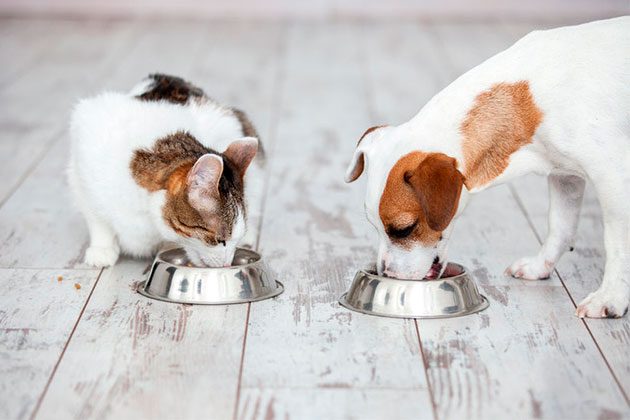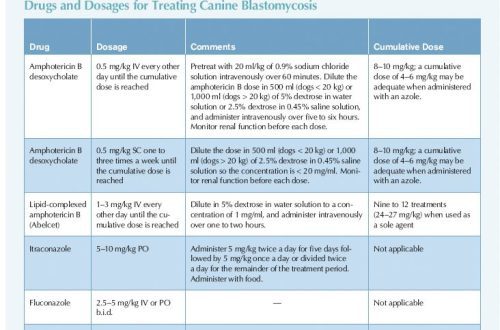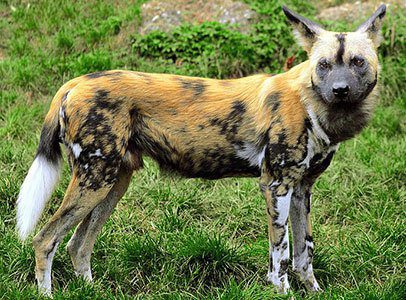
Economy, premium, super-premium, holistic – what is it and how to figure it out?

There are many types of pet foods on the market today. How and what to choose for your pet? Let’s talk about the classification of feed and what the composition of the feed means, how to read it.
Probably, every owner of a dog or cat, coming to the pet store, heard about different classes of food, but what does this mean and how do they differ?
Contents
Economy class
These are the most commonly used products on the market. They are distinguished by a low content of meat ingredients and their quality. The feed is based on corn or wheat, after cereals – ingredients of animal origin. Also, in the composition to attract the animal, artificial flavoring substances are most often present for high palatability by animals. That is why a pet cannot be torn off from a bowl of economy class food and it is difficult to transfer to a higher quality one. An attractive feature is the low price and general availability: you can buy not only in pet stores, but also in supermarkets and small grocery stores.
In our store:
- economy dog food
- economy cat food
Premium class
Offal is also present in these feeds, but their quality is higher and there is already meat in the composition, but it is less than 25%. Rice or corn are added as cereals to premium feeds. The advantage is the affordable cost, which practically does not exceed the price of economy class feed.
In our store:
- premium dog food
- premium cat food
The percentage of meat is more than 25%. Cereals can be used inexpensively – corn and wheat, but feeds with rice, oatmeal, barley, or grain-free usually predominate. Rations are balanced in vitamins and microelements. However, the price of such feeds can be significantly higher, and you can find food only in pet stores and veterinary clinics.
In our store:
- super premium dog food
- super premium cat food
Holistic
Foods in this class are distinguished by selected ingredients that are suitable for human nutrition by standards. Contains 50% or more meat. No offal is used, only dehydrated meat or fillets. Additionally, the composition may include legumes, vegetables, fruits, berries, healthy herbs. Also, these feeds are well absorbed, so feed consumption is low. Contains many vitamins and minerals. The price of such feed is quite high.
In our store:
- holistic dog food
- holistic cat food
Grain-free feed
They can be distinguished into a separate class, however, they can belong to both super-premium and holistic, depending on the composition and the country of the manufacturer, even of the same brand. Their composition, in addition to high-quality meat, includes vegetables, fruits, herbs and no grains, which are replaced by legumes, potatoes, sweet potatoes or tapioca. The content of meat in these feeds is quite high, there is a full range of vitamins. Most often you can buy it only in pet stores.
In our store:
- grain free dog food
- grain free cat food
Veterinary diets
Therapeutic feed necessary to help the body of the animal with various diseases. Their main difference is that they are usually used for a certain amount of time, rarely recommended for life. Their composition is aimed at alleviating the condition in the treatment of diseases. Occasionally, diets can be prescribed for life. They are quite expensive and are prescribed by a veterinarian. You can buy it at pet stores or veterinarians.
In our store:
- veterinary diets for dogs
- veterinary diets for cats
Feed for animals with special needs
These feeds can be consumed throughout life or periods. This includes diets for the prevention of hairball formation, for animals with sensitive digestion, skin, a tendency to overweight, and many others. Contains ingredients that help eliminate existing problems that do not require veterinary treatment.
Daily rations
Designed for daily nutrition of animals that do not have special needs and health problems. This includes food for castrated animals, for pets of different ages, sizes and breeds. However, all the feeds described above can belong to different classes in terms of their composition, quality, and price.
What to look for:
- If meat, what kind. Filet or dehydrated meat is acceptable
- Offal, if any, must be accurately described – liver, heart
- The content of meat and bone meal, bone meal or simply animal products are signs of poor quality feed. The ingredients in this case can be horns, hooves, feathers, bones
- Cereals are only of high quality or in small quantities. Wheat and corn are cheap products. Rice, barley, oats are more suitable options
- Flavorings may be present in the feed, but natural, for example, based on fish powder.
- Should not contain artificial preservatives
- Ash content. Percentage of mineral impurities. In poor quality feed it is high, over 10%, ideally 6-7%
- It is worth paying attention to the amount of feed that the animal should consume per day, the higher the norm, the lower the feed, the less it is absorbed by the body. It is also often more profitable to take a feed with a high meat content, since its consumption is less.





